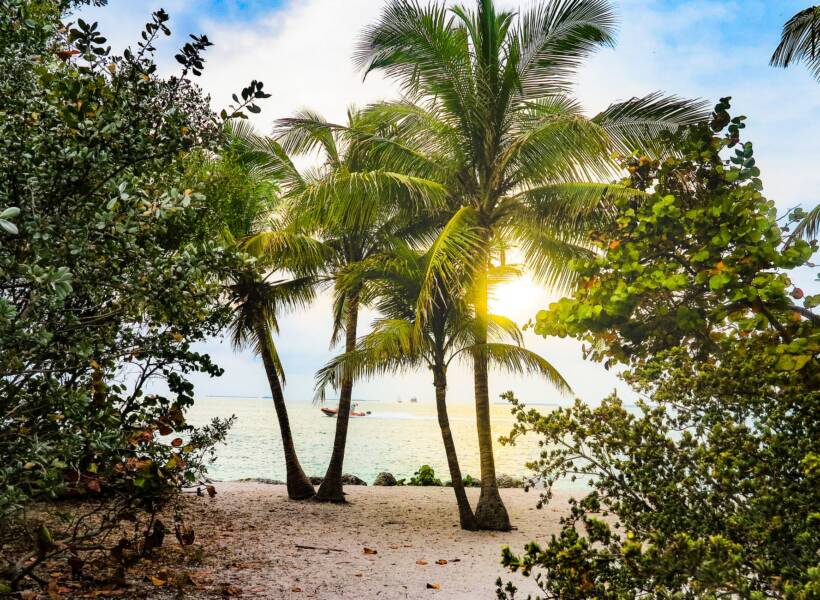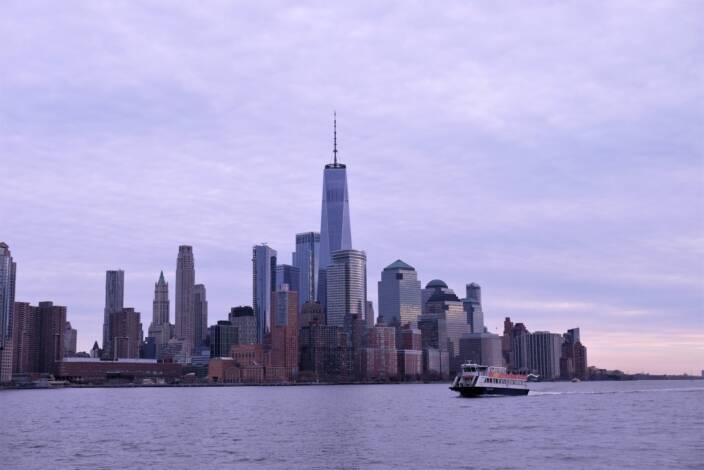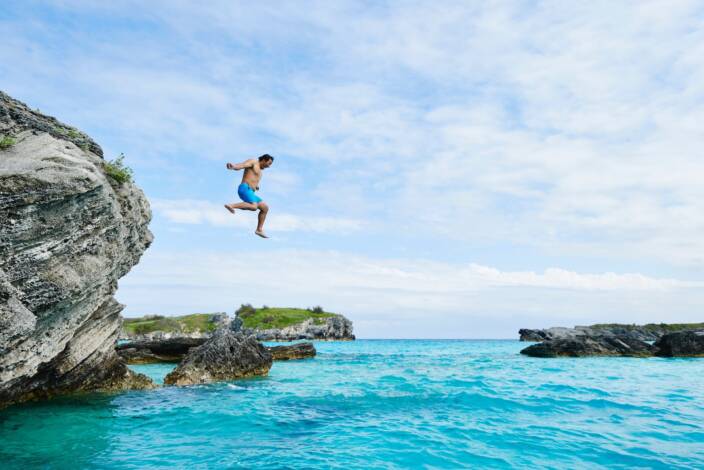
Amazing Nova Scotia: Six UNESCO World Heritage/Biosphere and Geopark Sites
April 22, 2021 Jim Byers
For a relatively small province, Nova Scotia packs a solid UNESCO punch. Visitors will find a remarkable half-dozen UNESCO (United Nations Educational, Scientific and Cultural Organization) world heritage sites. Here’s a look at all six for when the time is right to visit again.
OLD TOWN LUNENBURG WORLD HERITAGE SITE

This is one of the most charming villages in Canada, a joyous collection of historic, wooden villages painted in bright, brazen colours; cardinal red, lime green, pale lavender and canary yellow. Some folks call the painted buildings the “UNESCO Fresco.” This is the home of the fabulous Bluenose, Canada’s famous racing ship, which is featured on the back of the Canadian ten-cent piece. (By the by, the word “bluenose” is an old nickname for someone from Nova Scotia, which of course means New Scotland.) The original ship, which was launched in 1921, never lost a race but foundered on a reef in the Caribbean in 1946. The Bluenose II was launched in 1963. They’ll celebrate the 100th birthday of the original Bluenose this year. Wander the streets and try excellent chowder and Nova Scotia craft beers or sparkling wine, check out the city’s maritime museum, or just soak up the excellent harbour views. Be sure to take the short drive out to Blue Rocks, which might be Canada’s prettiest fishing village. Click here for more information.
LANDSCAPE OF GRAND PRE WORLD HERITAGE SITE

Grand Pre, just outside Wolfville, was settled by Acadians in the 1680s, They built a series of dikes and tilled the fields for a century or so before being expelled by British soldiers and sent away to Louisiana and other parts of the world. Here you’ll find a monument to Evangeline, the mythical young Acadian woman made famous around the world by Henry Wadsworth Longfellow (and later by The Band, who wrote a song of the same name with a doleful, Acadian feel). You also can learn the history of the heartbreaking deportation of the Acadians from these lovely shores by the British from 1755 to 1762. They do a nice job explaining how it all happened – a sad chapter in Canada’s history – and show where folks were dispersed and how families were split up and how a few courageous Acadians resisted deportation. There’s a small church and visitors centre with a good, 22-minute movie you don’t want to miss. When I was there, I mentioned to a volunteer how beautiful I thought the area was. “That’s why the Acadians wanted to come back,” she said with a smile. For the best views, try the View Park on Old Post Road. Off in the distance is Cape Blomidon. Local legend says that a Mi’kmaq named Kluscap or Glooscap kept an eye on his people from the towering capelands high above the Atlantic Ocean. Click here for more information.
JOGGINS FOSSIL CLIFFS WORLD HERITAGE SITE

This is a remarkable geographical feature on the Bay of Fundy near the border with New Brunswick. The cliffs have been described by some observers as “the Coal Age Galagapos” because of the amazing array of fossils from what’s called the Carboniferous Period. (That’s roughly 354 to 290 million years ago if you’ve forgotten your high school geology lessons). Visitors can walk along and 15 kilometres of magnificently exposed layers of rock revealing the world’s most complete fossil record of life in the Coal Age, when lush rain forests covered the region. Constant erosion from the world’s highest tides (13 metres) twice a day helps expose new fossils on almost a daily basis. You also can view spectacular sandstone layers that encase ancestors of the first dinosaurs. Non-geology buffs will enjoy the rock platforms and long, pretty beaches backed by cliffs of red rock. For more information, click here.
SOUTHWEST NOVA BIOSPHERE RESERVE

This area was designated in 2001 under the UNESCO Man and the Biosphere Program. It’s one of only 18 ecosystems in Canada with this special UN designation. The Southwest Nova Biosphere Reserve spans over 1.54 million hectares and consists of five counties: Annapolis, Digby, Queens, Shelburne and Yarmouth. The core protected areas are Kejimkujik National Park and the Tobeatic Wilderness Area. The latter is the largest protected area in Canada’s Maritimes region and means “place of the alder” in Mi’kmaq. It’s home to a great many moose and white-tailed deer, and there are wonderful lakes and streams for canoeing and kayaking. The reserve is home to the highest diversity of reptiles and amphibians east of Ontario and more than 75% of Nova Scotia’s at-risk species. The area also has the largest collection of petroglyphs in eastern North America. Kejimkujik is a great place to get away from it all, with two separate sections. The larger, inland area features beautiful lakes and quiet rivers lined with majestic pines and deciduous trees that turn vibrant shades of yellow, orange and red in the fall. The smaller section is on the coast between Yarmouth and Lunenburg and features quiet beaches and beautiful rock formations. Click here to learn more.
BRAS D’OR LAKE BIOSPHERE RESERVE

Many folks know the coastline, but the interior of Cape Breton is also beguiling. The Bras d’Or Lake Biosphere Reserve is sometimes described as the heart of Cape Breton island, with a unique blend of salt and fresh water. It’s a fabulous location to watch animal life, including curious, adorable grey seals and majestic bald eagles and herons hoping to snare a fish for lunch. The biosphere stretches around the lake and includes charming communities such as Baddeck, home of the Alexander Graham Bell National Historic Site. Wagmatcook, Eskasoni, where you can take a cultural journey and learn about Mi’kmaq traditions, and Iona, which is home to a small, pretty bay called Plaster Cove. The area is home to Mi’kmaw First Nations and descendants from early French, Scottish, and English settlers. If you’re a sailor, try chartering a sailboat in Baddeck or St. Peters. If that’s not your thing, try a hike to Uisge Ban Falls or paddle the dozens of beautiful inlets of Baddeck Bay in a kayak or canoe. The extensive watershed area is home to Mi’kmaq First Nations and descendants from early French, Scottish, and English settlers. Click here to learn more.
CLIFFS OF FUNDY GLOBAL GEOPARK

The Mi’kmaq were the first geologists of the Geopark, selecting rocks for their points and tools, and for ceremonial use in sweat lodges. The Cliffs of Fundy honours the ethical space of the Mi’kmaq people and their oral traditions of cultural geoheritage. Visitors can check out 90-meter-high, bronze cliffs overlooking waters where 12 species of whales come to mate, play and feast on plankton each year. Later, walk on the ocean floor when the tide has dropped the height of a four-storey building; great for Instagram pics. Discover the oldest dinosaur fossils in Canada and fascinating Mi’kmaq legends. The Cliffs of Fundy is the home of the legendary Kluscap, a mythical (or maybe not) Mi’kmaq figure. You can take guided tours on foot, on bike, on horseback and even by air for a true birds-eye view of this remarkable region. Click here to discover more.
About the Author




















Leave a Reply